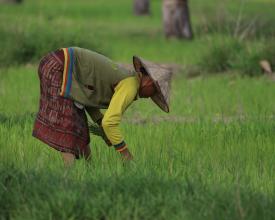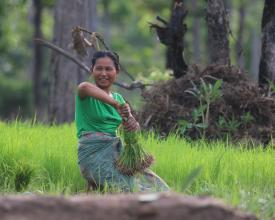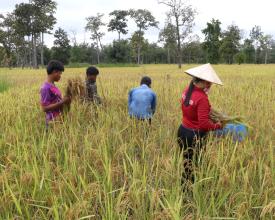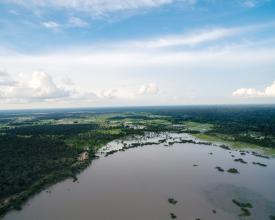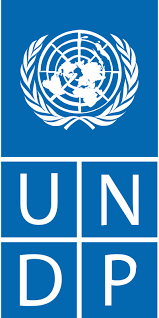
Gestion durable des forêts et des terres dans les écosystèmes forestiers secs à diptérocarpes du sud de la RDP Lao
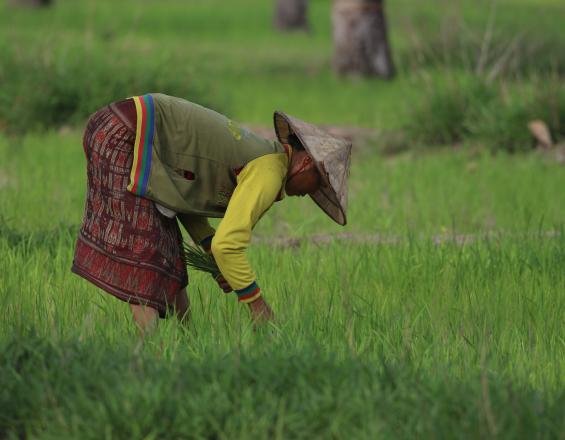
L'objectif est de faciliter le passage d'une gestion non durable à une gestion durable intégrée des terres et des forêts dans le paysage de la forêt sèche à diptérocarpe afin de sécuriser les habitats essentiels de la faune et de la flore, de conserver la biodiversité, de maintenir les écosystèmes et de soutenir le développement des moyens de subsistance.
Il aide les communautés locales à participer à la protection de la faune et de la flore, au renforcement des sources alternatives de probabilité, à l'amélioration des zones protégées dans le cadre des efforts visant à protéger l'habitat naturel, à inverser la dégradation de l'environnement, ainsi qu'à soutenir les moyens de subsistance locaux, en offrant aux communautés d'autres possibilités de générer des revenus et en renforçant leur soutien en faveur de la conservation de la biodiversité. Une approche participative a été complétée par les services gouvernementaux compétents.
Contexte
Défis à relever
- Sources limitées d'activités génératrices de revenus entraînant une dépendance excessive à l'égard des ressources naturelles
- Les communautés sont impuissantes à empêcher la perte d'habitat et la dégradation de l'écosystème, ce qui entraîne l'appauvrissement des moyens de subsistance.
- La surexploitation et la criminalité forestière entraînent une diminution de la population d'animaux sauvages.
- Capacité et ressources limitées des agences compétentes pour la conservation de la biodiversité et de la faune.
Éléments constitutifs
Accords de conservation
Développement d'activités génératrices de moyens de subsistance alternatifs
Sensibilisation du public à la conservation de l'environnement et de la biodiversité
Emplacement
Traiter
Résumé du processus
Les facteurs clés de succès - et les activités du projet qui sont structurées pour soutenir ces éléments de solution - doivent être cohérents et coordonnés. Les accords de conservation échoueront si les communautés ne sont pas au courant de l'initiative ou des avantages qu'elle procure. De même, les accords de conservation ne peuvent réussir en l'absence de moyens de subsistance alternatifs. Lorsque les éléments constitutifs du projet fonctionnent ensemble dans l'ensemble du paysage du projet, cela garantit que les buts et les objectifs du projet seront durables à long terme, assurant le bien-être de la communauté et de l'écosystème.
Blocs de construction
Accords de conservation communautaire
Les accords de conservation communautaires sont un échange négocié d'avantages en échange de changements dans l'utilisation des ressources, en fonction des performances vérifiées. Une fois qu'un comité de développement villageois et les autorités gouvernementales ont formalisé un accord de conservation, celui-ci est utilisé comme cadre pour toutes les activités de développement dans le cadre du projet et intégré à la planification de l'utilisation des terres. Les bénéfices sont acheminés par l'intermédiaire de fonds de développement villageois et comprennent un soutien aux comités de développement villageois pour la gestion des fonds en renforçant les capacités au niveau du village, garantissant ainsi que des dispositions appropriées en matière d'accès et de partage des bénéfices sont incluses dans tous les accords de conservation.
Facteurs favorables
- Engagement communautaire
- Développement des institutions villageoises
- Moyens de subsistance / soutien aux revenus
- Salaires (formation et équipement) pour les emplois liés à la conservation (patrouilles, surveillance, reboisement)
- Investissement dans les services sociaux et les infrastructures
- Investissement dans les activités de subsistance
Leçon apprise
- Les équipes de projet doivent contrôler et évaluer la conformité et la performance des villages avec les accords de coopération.
- Les AC doivent être renégociés si nécessaire pour garantir leur adéquation à long terme et l'engagement de la communauté.
- Des mesures d'incitation pour des performances élevées (et des mesures de dissuasion pour des performances faibles) doivent être prévues.
Ressources
Développement de moyens de subsistance alternatifs
L'objectif global du projet est de "faciliter un changement transformateur vers une gestion durable des terres et des forêts dans le paysage forestier de la province de Savannakhet afin de sécuriser les habitats essentiels de la faune, de conserver la biodiversité et de maintenir un flux continu de services multiples, y compris l'approvisionnement en eau de qualité et la prévention des inondations". Cette évolution vers la durabilité repose sur la mise en place d'alternatives adéquates à l'utilisation non durable des ressources. Les utilisations non durables antérieures des paysages forestiers du projet (exploitation forestière, braconnage, etc.) ne cesseront pas à moins que les activités de subsistance de remplacement n'apportent un avantage économique et n'améliorent la génération de revenus pour les villageois participant au projet.
Facteurs favorables
- Intégration avec d'autres activités du projet (par exemple, si des méthodes d'élevage améliorées permettent de garder les bovins et les buffles près des maisons des villageois, le fumier de ces animaux peut être collecté et transformé en engrais organique qui peut être utilisé pour les jardins potagers et la production de riz).
- Recrutement de spécialistes
- Planification et préparation
- Évaluation des besoins
- Analyses SWOT
- Suivi et évaluation
- Contrats de conservation
Leçon apprise
- La qualité des activités de vulgarisation en matière d'élevage est essentielle
- Les activités liées aux moyens de subsistance doivent être intégrées à toutes les activités du projet, plutôt que d'être cloisonnées.
- Les cibles et les indicateurs doivent être respectés
- Les activités doivent être conçues de manière à identifier comment elles répondent aux buts et objectifs généraux du projet.
Sensibilisation du public à la conservation de l'environnement et de la biodiversité
L'adhésion et la participation de la communauté sont des éléments clés de la réussite et de la durabilité d'un projet. Elles dépendent dans une large mesure de la sensibilisation de la communauté au projet lui-même, ainsi qu'à ses avantages, ses bénéficiaires et sa viabilité à long terme. La sensibilisation aux nouvelles zones protégées, aux lois/réglementations révisées, aux accords de conservation communautaires, etc. est également un élément clé de l'efficacité de la mise en œuvre et de l'interdiction, et de l'adhésion de la communauté aux plans de conservation.
Facteurs favorables
- Création et diffusion de messages compréhensibles par la population locale, en utilisant la langue vernaculaire appropriée (y compris des médias tels que la radio qui n'exigent pas une alphabétisation universelle).
- La sensibilisation accrue aux avantages de la conservation de l'environnement renforce le sentiment de propriété des communautés à l'égard des semis plantés.
- Les autorités locales jouent un rôle essentiel en impliquant les membres de la communauté et en garantissant de manière consensuelle le respect des règles convenues.
Leçon apprise
- La déforestation et la perte de biodiversité ont lieu dans des situations où les communautés locales n'ont pas conscience de l'importance des forêts pour la conservation de la biodiversité et les moyens de subsistance durables.
- Les moyens de subsistance alternatifs limités entraînent une utilisation non durable des ressources forestières et d'autres facteurs, notamment la faiblesse des capacités d'application de la loi pour limiter la criminalité liée aux espèces sauvages et à la forêt.
- Les communautés sont prêtes à changer lorsqu'on leur propose des options viables, comme le montre l'adoption de la production de riz SRI, qui a permis de réduire la pression exercée sur les terres forestières pour la production agricole.
- Pour que les initiatives soient efficaces, viables et durables, des alternatives économiques à l'utilisation des ressources forestières doivent être proposées, afin de compenser les pertes subies en raison des restrictions imposées à l'utilisation des ressources forestières.
Impacts
L'approche participative communautaire du projet, le renforcement des capacités et la mise en œuvre d'un contrat de conservation ainsi que le développement de l'écotourisme sur le site pour la conservation de la vie sauvage, en particulier du cerf d'Elbe(Rucervus eldii), ont permis d'obtenir des résultats significatifs en termes de changement de comportement de la communauté et de doublement de la population.
Les communautés ont été responsabilisées par la formation et la fourniture d'équipements de base, ce qui leur a permis de participer à la surveillance, à l'établissement de rapports et à l'application des réglementations. En outre, la mise en œuvre des accords de conservation a amélioré leur bien-être et renforcé leur responsabilité en matière de conservation des ressources naturelles en réduisant leur dépendance à l'égard des produits forestiers. La gouvernance au niveau du village a été améliorée grâce au soutien des infrastructures et au renforcement des capacités de gestion du projet. Des opportunités de moyens de subsistance ont été offertes de manière égale, y compris pour les jeunes et les femmes, dans le cadre des efforts visant à assurer une gestion durable des ressources naturelles.
La collaboration avec les agences gouvernementales compétentes a permis d'élaborer des plans de gestion des zones protégées et des plans d'affaires, ainsi que de renforcer les unités de conservation communautaires afin d'empêcher la chasse des espèces menacées, ce qui a entraîné une augmentation de la population de 75-80 individus en 2016 à plus de 170 individus en 2021.
Bénéficiaires
Communautés locales dans la province de Savannakhet
Objectifs de développement durable
Histoire

Le projet SAFE Ecosystem a débuté en 2016. À l'époque, la dépendance excessive à l'égard des ressources naturelles et la conversion d'habitats critiques menaçaient l'écosystème, entraînant la perte et la dégradation de l'habitat, ce qui avait un impact négatif sur les moyens de subsistance et l'utilisation durable des ressources naturelles.
Au début du projet, les communautés locales avaient l'habitude de chasser le cerf eld`s, avec une compréhension limitée de leur importance, et les empiètements de la zone protégée menaçaient encore plus l'écosystème. Les engagements communautaires ont permis d'en savoir plus sur les causes sous-jacentes : la perception des communautés, la récompense pour la participation et le niveau de sensibilisation au cerf d'Elds et à l'écosystème en général. Elles ont également exprimé leur volonté de prendre part aux initiatives visant à protéger les espèces menacées et à conserver l'habitat. La diffusion de la loi et des règlements forestiers révisés a permis de sensibiliser les communautés locales à l'importance et à la responsabilité de la conservation et de l'utilisation durable des ressources naturelles.
Le projet a soutenu la mise en place d'une équipe de conservation et a également utilisé la structure communautaire existante, le "comité de développement du village", pour mettre en œuvre des activités conformément aux accords de conservation. Le comité de développement du village a reçu un soutien financier basé sur la mise en œuvre des différentes activités conformément aux accords. Il a veillé à ce que les activités mises en œuvre soient inclusives et documentées. Les bénéfices ont été partagés, renforçant le développement local et le soutien à la conservation des forêts et de la faune.
Grâce à l'approche participative de la communauté, au soutien du gouvernement et aux bénéfices partagés, les communautés ont non seulement été habilitées à conserver la biodiversité, mais ont également pris conscience de l'importance de la conservation pour le développement et les générations futures. La chasse est devenue une chose du passé et la région a attiré un grand nombre de touristes.

